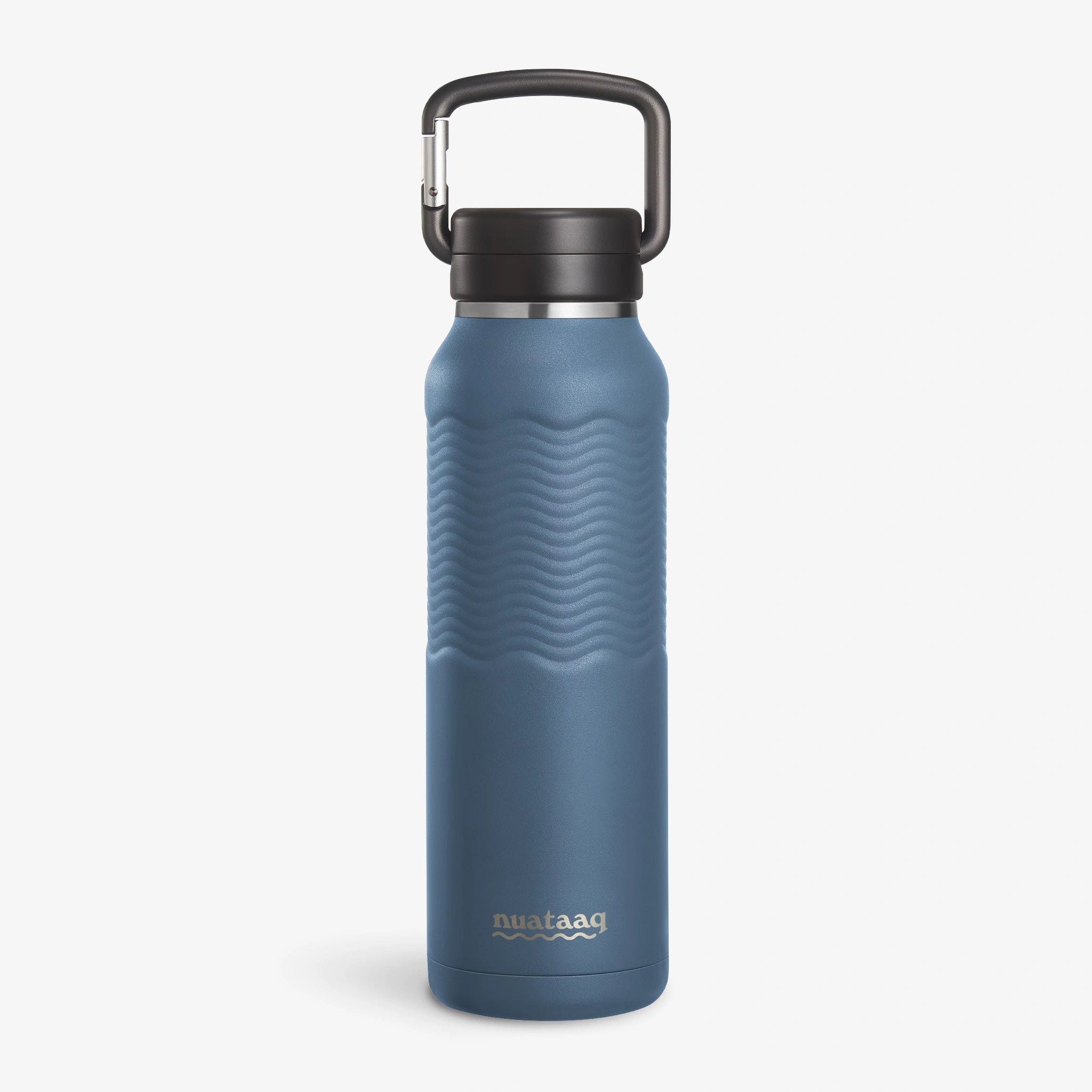How Much Water Do You Need For A Hike?
Hike Hydration Calculator by Team Nuataaq
The Big Picture
We wanted a fast and easy way to estimate how much water is needed for a hike. This is a walk through and some light documentation of the factors used in our hike hydration calculator. As a hopefully unneeded disclaimer, we are not doctors and this isn’t a medical device, just a helpful guide based on years spent hiking / backpacking / rucking and well-established exercise and heat safety research.
How we turn your inputs into liters
The core idea of the calculator is we estimate how much water you’ll likely need per hour, then scale it to your hike’s duration and conditions. That hourly amount changes based on heat, sun, pace, body size, pack weight, and age, which then gets rounded to a useable amount (8.5 oz / 250 mL increments). We want to make the plan for the trail match the plan in our heads, so we made the water increments easy to visualize. You’ll also see a “pace and time” line so you understand what your chosen distance and average speed mean out on trail.
Distance & Average Speed → Your actual time on trail
Distance and speed are the most important factors for determining the intensity of your hike. We convert distance and average speed into hiking duration, with faster paces raising metabolic demands and slower paces decreasing it. To keep things realistic, we nudge the rate slightly with speed and cap extremes so a short, very fast effort doesn’t inflate water, and a long, very slow stroll doesn’t deflate it. Research that catalogs walking effort by speed (Metabolic Equivalent of Task (MET) values) shows intensity rises as pace increases at a greater than linear rate.
Temperature & Weather
Heat drives sweat rate. We treat 55 - 75°F as a comfortable band, then scale fluid needs down in the cold and up as temperatures climb, especially in the high 80s and 90s. Sun adds radiant heat (feels hotter), while steady rain usually cools you off a touch. This is a simpler version of the heat-risk frameworks used by the US Military developed Wet Bulb Global Temperature (WBGT). Full disclaimer, when we say simpler we mean simpler, the full WBGT framework also accounts for wind speed, latitude, and dew point, sun exposure and humidity when judging heat stress which we thought was a little much.
Body Size (Height + Weight) → Bigger body, more heat lost & more water needed
Bigger bodies produce and store more heat and tend to need more fluid in the same environment. We approximate this with Body Surface Area (BSA), so our adjustments reflect both height and weight rather than weight alone. It’s a gentle nudge, not a hard swing.
Pack Weight (only above ~10 lb) → Extra load, extra demand
Carrying weight increases the energetic cost of walking and adds heat your body must shed. This effect only starts adding once your pack clears ~10 lb, reflecting load-carriage research that shows energy cost climbs with carried mass.
Age
Older adults typically dissipate heat a bit less efficiently (reduced sweat and skin-blood-flow responses), so we add a light age based safety factor. It’s conservative by design, and it grows modestly.
Rounding to Real Bottles
Once we have your liters, we snap to practical quarter-liter steps (0.25 L) so you can plan with nice round values. For use on the trail, safety agencies recommend drinking small amounts frequently, about a cup every 15–20 minutes in the heat, rather than chugging . We would also avoid extreme intake rates to avoid swinging entirely in the other direction. Looking for a bottle designed for hiking, backpacking, and outdoor adventure? Check out our patented Carabiner Bottle for the best way to take your bottle on the go.
What we don't factor in
Terrain, altitude, humidity, wind, sun angle, and fitness all matter, but they’re tough to measure, subjective, or are something we feel we can roll into another feature. We bake some of this into temperature, weather, speed and the conservative guardrails above. When in doubt, bring extra water and electrolytes, and drink plenty and often.
Calorie calculation
At a moderate walking pace (around 3.0 mph), a 150-lb person typically burns in the ballpark of 80 - 90 calories per mile. We use a gentle, weight-based baseline and nudge it only slightly with temperature and speed, so your number stays realistic instead of extreme.
Safety notes
Hydration needs vary widely. If you have a medical condition, are acclimating to heat, or plan very long/very hot hikes, talk to a clinician or coach. On hot days: water, rest, shade, and electrolytes are your friends. We are not a medical outfit nor do we pretend to be. Please stay safe outside and be prepared.
Sources
